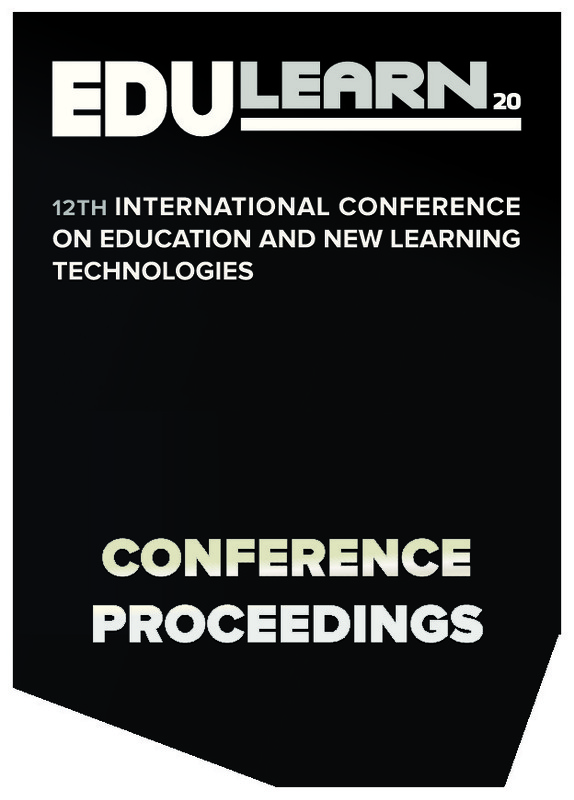JavaScript is disabled for your browser. Some features of this site may not work without it.
Buscar en RiuNet
Listar
Mi cuenta
Estadísticas
Ayuda RiuNet
Admin. UPV
Comparison student learning approach of first year life science students
Mostrar el registro sencillo del ítem
Ficheros en el ítem
| dc.contributor.author | Leiva-Brondo, Miguel
|
es_ES |
| dc.contributor.author | Cebolla Cornejo, Jaime
|
es_ES |
| dc.contributor.author | Peiró Barber, Rosa Mª
|
es_ES |
| dc.contributor.author | Pérez De Castro, Ana María
|
es_ES |
| dc.date.accessioned | 2021-12-21T06:57:06Z | |
| dc.date.available | 2021-12-21T06:57:06Z | |
| dc.date.issued | 2020-07-07 | es_ES |
| dc.identifier.isbn | 978-84-09-17979-4 | es_ES |
| dc.identifier.uri | http://hdl.handle.net/10251/178657 | |
| dc.description.abstract | [EN] Student learning approach is not a fixed characteristic of the student and normally varies between subjects. Differences had been reported depending on age, gender, level of studies, cultural and other factors. Several types of approaches can be identified, but deep and surface are the most common approaches studied. Deep approach is characterized by more reflection and comprehension and intrinsic responsibility of the students in their own learning, while surface approach is more related to a lack of reflection, a minimum effort and the learning focused on the mark. Determination of the learning approach is a key factor to choose the most suitable strategies of teaching, with the purpose of facilitating the engagement of the students in the subject and helping to maximize their learning process. Several methods have been developed to measure the student approach to learning, and the R-SPQ-2F questionnaire is one of the most used. In this study, students of first year of the Biotechnology degree of two different courses were assessed with the R-SPQ-2F questionnaire for their student approach to learning. The reliability of the questionnaire was validated for the main scales of the questionnaire, and no differences were recorded according to gender or course. On the contrary, differences appeared related to the language used as a medium of instruction (English or Spanish). Comparisons with other studies are made and factors affecting these results are discussed. Recommendations are given to encourage deep approach of the students to foster learning and engagement of the students in training. | es_ES |
| dc.description.sponsorship | The publication of this work has been funded by a project of Educational Improvement and Innovation awarded by the Vice Dean for Studies, Quality and Accreditation of the Universitat Politècnica de València (Spain). | es_ES |
| dc.language | Inglés | es_ES |
| dc.publisher | IATED Academy | es_ES |
| dc.relation.ispartof | EDULEARN20 Proceedings | es_ES |
| dc.rights | Reserva de todos los derechos | es_ES |
| dc.subject | Student approach to learning | es_ES |
| dc.subject | Deep and surface approach | es_ES |
| dc.subject | Assessment | es_ES |
| dc.subject | Learning styles | es_ES |
| dc.subject.classification | GENETICA | es_ES |
| dc.title | Comparison student learning approach of first year life science students | es_ES |
| dc.type | Comunicación en congreso | es_ES |
| dc.type | Capítulo de libro | es_ES |
| dc.identifier.doi | 10.21125/edulearn.2020.0638 | es_ES |
| dc.rights.accessRights | Abierto | es_ES |
| dc.contributor.affiliation | Universitat Politècnica de València. Departamento de Biotecnología - Departament de Biotecnologia | es_ES |
| dc.description.bibliographicCitation | Leiva-Brondo, M.; Cebolla Cornejo, J.; Peiró Barber, RM.; Pérez De Castro, AM. (2020). Comparison student learning approach of first year life science students. IATED Academy. 2019-2026. https://doi.org/10.21125/edulearn.2020.0638 | es_ES |
| dc.description.accrualMethod | S | es_ES |
| dc.relation.conferencename | 12th International Conference on Education and New Learning Technologies (EDULEARN 2020) | es_ES |
| dc.relation.conferencedate | Julio 06-07,2020 | es_ES |
| dc.relation.conferenceplace | Online | es_ES |
| dc.relation.publisherversion | https://doi.org/10.21125/edulearn.2020.0638 | es_ES |
| dc.description.upvformatpinicio | 2019 | es_ES |
| dc.description.upvformatpfin | 2026 | es_ES |
| dc.type.version | info:eu-repo/semantics/publishedVersion | es_ES |
| dc.relation.pasarela | S\415792 | es_ES |
| dc.contributor.funder | Universitat Politècnica de València | es_ES |








